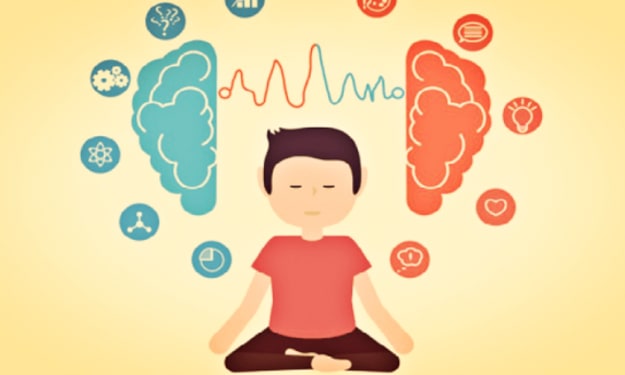Lessons of the Breath
The Lessons Life Teaches us Through Meditation

After years of intense meditation complimented by austere yogic practices, the Buddha left his dwelling place in the forest, met a girl down by the river who offered him a bowl of rice, ate it, found a tree, sat under it and began to meditate. This meditation session would become the most renowned in world history, for it initiated the process by which The Buddha reached enlightenment. The method by which he did this was simple—he focused his mind on his breath.
For meditators there are a plethora of different methods that may be utilized, but most of them, in theory, will get you to the same place, which is a greater sense of one’s authentic self and a more robust self-awareness. But focusing on the breath is one of the most tried, and in my opinion, the truest—for it involves very little distraction but your own thoughts, of course, and involves the least mental chatter. I have found that creating a consistent daily schedule and routine of waking in the early mornings and focusing on the breath for about 30 minutes a day decreases stress and anxiety and gives one a greater awareness of one’s own mental machinations throughout the day. I once heard a wise man say “Be with your breath, follow it and observe it intensely as if it were your teacher. It has much to teach you.” This essay will expound upon those lessons I have learned from the breath.
Lesson 1: Everything is Mental.
As I sit and focus on my breathing, I allow my mind to effortlessly rest on the inflow and outflow of the breath. It is my mind that I attempt to sort of control and it’s my focus that I am trying to aim at the breath. Yet, almost as If I’m aiming an arrow at a target while the bow and the shooter aren’t steady, the bow wavers to the right and then to the left. Gently, I must bring the focus back only for it to waver again. This teaches me patience because in life we are consistently designing goals and creating aims only to fail, lose focus just to have to re-focus. At first, we may become angry at ourselves, yet as time goes on and we get older we realize that this is the nature of life. We try, we fail, then we re-adjust and try again. Also, the universe we live in may be a material thing but our relationship to it is mostly buttressed by our brains’ processing the multitudinous information that it sends us, which suggests that our reality is more a holographic projection of our brain matter. Nonetheless, the brain is the data processor of the human body while the mind is the seat of awareness—that’s what consciousness is—awareness. Every man-made thing that we can reach out and touch was first initiated within the mind as an idea. From there, we go about the proper bodily functions and implementation of action and plans that materialize the said idea in the phenomenal world. Thus, the old adage “The Universe is Mental” may hold true. In the midst of a proper meditation session, one must come to terms with one’s own mind in some way being that the very thing that may distract you in your session will likely be your own thoughts. These thoughts, are the Prima Materia of your existence and, if we are honest, these thoughts are actual, real-life things that affect our mood, our attitudes and beliefs, which become our habits and then these, in turn, affect the outcome of our lives. Thus, thoughts are important and the nature of them has a tremendous impact. With this in mind, if we can shift our thinking then we can shift our very lives. All of our problems, all of the solutions to those problems, spring from the same fountain.
Lesson 2: Everything Has a Rhythm
Everything in life happens at a particular time, this being the case, one could suggest that everything happens with a particular sense of timing. Thus, there is a lapse of time between the time when a thing happens and the next time it happens; we call the procession of these incremental time lapses “rhythm.” Therefore, we can argue that the events of our lives, no matter how small or large, happens rhythmically. When one sets off on a long walk, aft first, one’s gait may be a little awkward as there may be different spans of time between each step taken. Yet, when those spans of time, or rather, spans of gait, even out then one’s walking becomes smoother, the strut ceases to be forced and awkward and the strut morphs into a saunter—the walker has found their rhythm. In meditation, the breath is the same as walking, initially, it is awkward but eventually evens out and the breathing in and out becomes more stable, more relaxed and this eases the meditator into a sense of peace and calm. The procession of life’s events also has a rhythm to it and this is discoverable if we are at ease within and can cultivate the sense of self-awareness that allows us to slow our pace of life down and become more aware of the phenomena happening around us. When dancing, as least as I understand it, it is optimal and makes the most sense to dance to the rhythm of the beat. In some cultures, perhaps, people may dance to the words but in the best dancing cultures dancers dance to the rhythm of the beat. If one doesn’t, then they are considered “offbeat” and their dancing will be seen as “lacking rhythm.” As with the great dance of life, a great dancer aligns themselves with the rhythmical beat of life’s music, stepping when it’s time to step, pausing when its time to pause. When your life is in alignment with the overall phenomenal rhythm of your life, you hover harmoniously and effortlessly toward your goals, when in sync with life synchronisms send us where we need to be precisely when we need to be there. I suppose that this may be better shown than written. In fact, I think most people would agree that a dancer whose moves are gracefully aligned to the music looks much more proficient than someone who is simply just wailing about as if they are in a vacuum.
Lesson 3: Everything Compensates
The breath in is equal to the breath out. Such is the same in life, where everything compensates itself, every action is compensated with another action that is equal in degree and to the same extent, even though the compensating action may be a direct polar opposite to the initial action. If the breath out is longer or fuller than the breath in, the meditator becomes tense and the breath will have to go through a set of awkward breaths before the breathing is compensated and returns to its proper rhythm. In life, life’s actions are often compensated between polar opposites. If one thinks of our world as a consistent push and pull between polar opposites, then one can see how life is a compensating flow, back and forth, between those polar opposites. Most of our reality relaxes on a dichotomous spectrum with absolutes on each end. These absolutes are the same in quality but differ in degree. Hot and cold are both temperatures, up and down are both directions, female and male are both genders. A push or action towards one pole actuates into existence movement to the opposite pole to the same extent. In life, these phenomena occur subtly, yet happens nonetheless. If one takes a careful look at their life, they’ll see that life happens in seasons, some with fortune and some with misfortune. Great calamities may often be followed by fortuitous events, what is lost eventually comes back in a different form. Too often we like to mourn over, what appears to be, the inherent nastiness of life yet if we are patient and honest with ourselves, through all of the difficulty, life has been a rollercoaster ride with compensating ups and downs, where the good and bad in life come to together like two sides of a coin. If you breath in, you must breathe out, otherwise, you suffocate.
About the Creator
Robert Burton
A world traveler and student of life, people and the human mind. I've been molded by my origins in The American South, six years of life in The People's Republic of China and my passion for life. I live, I learn and then I write about it.






Comments
There are no comments for this story
Be the first to respond and start the conversation.